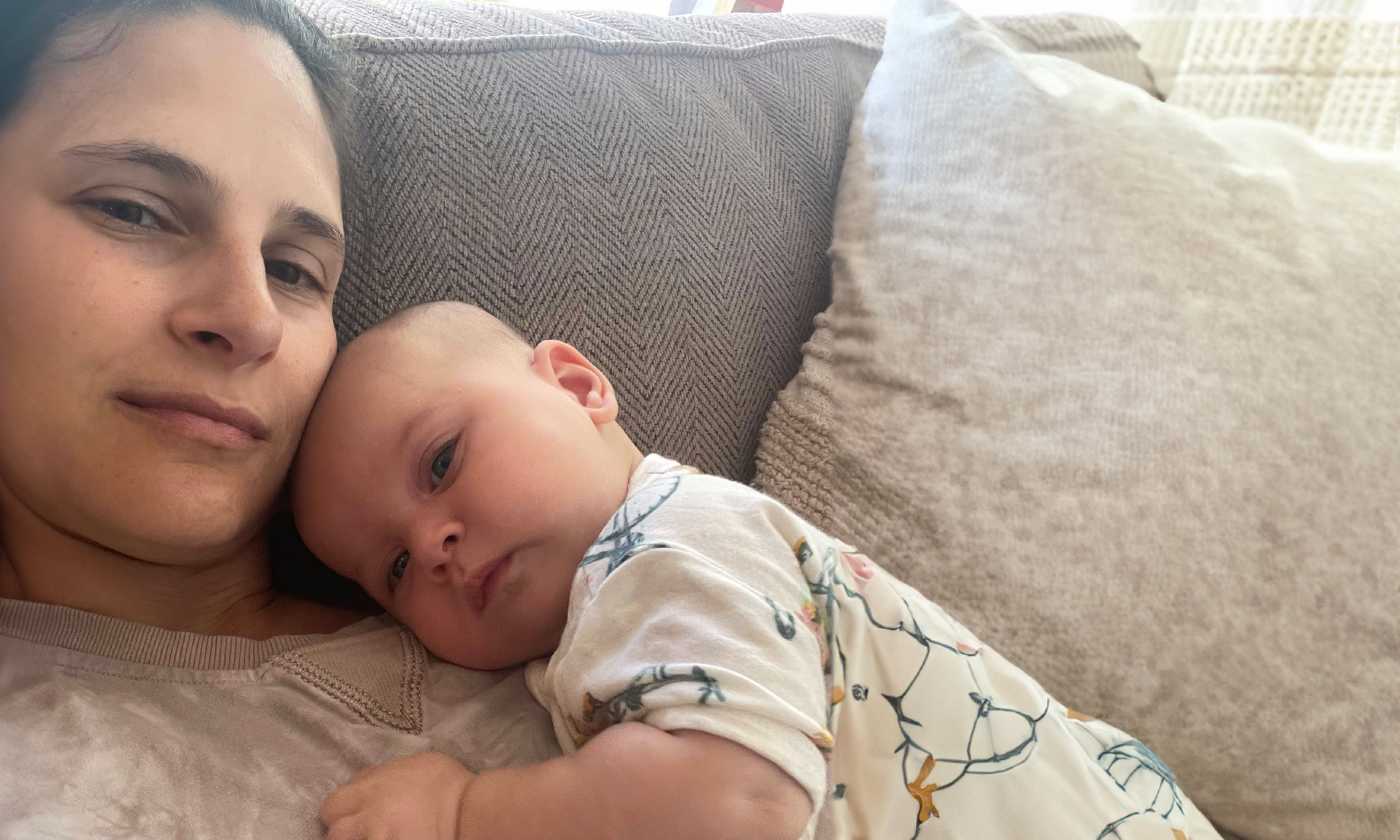
11 Toddler Sleep Training Methods That Work!


If you’ve got a toddler, bedtime might be a pretty challenging part of the day — especially if you’re trying to get your little one to sleep on his own. Luckily, there are lots of toddler sleep training techniques, tips, and solutions to cope with just about any issue. With these in hand, along with a big dose of patience on your part, easier bedtimes are not too far away. Read on to find out more about what toddler sleep training is and how to make it work in your house.
What Is Toddler Sleep Training?
Sleep is crucial for your toddler’s healthy development. Your child will typically need around 11 to 14 hours of sleep in a 24-hour period, which may include one or two naps of an hour or two.
But getting a toddler to peacefully doze off at night is easier said than done, especially if your child is struggling to fall asleep independently, or can't wind down after an exciting day of playtime.
This is where sleep training can help. During the toddler years, one of the chief goals of sleep training is to get your child to be able to self-soothe and fall asleep on his own without crying out for you and without getting out of bed to come and find you.
Sleep training may also help your child learn to be able to fall back asleep by herself when she wakes in the night.
In other words, sleep training is a broad term for a process that aims to slowly reduce your involvement in your toddler settling down while in bed and falling asleep. Sleep training is not one-size-fits-all, and one style of sleep training may work better for you and your little one than another.
You may need to experiment with a few different approaches, but by remaining calm and consistent you'll eventually be successful in sleep training your toddler.
Why Toddlers Can Struggle to Stay in Bed and Fall Asleep
Before launching into sleep training, it's helpful to understand why your toddler may be fighting bedtime and resisting going to sleep. Here are just some of the reasons your toddler may be struggling:
A change in environment or home life. If your toddler used to be a good sleeper but now isn’t for some reason, consider whether there’s been a big change in his life. A new baby in the house, a move to a new home, switching beds or bedrooms, starting preschool — any of these can be upsetting to a young child, making it harder to relax at the end of the day, and end up disrupting his sleep routine
Fear of missing out. All the excitement of toddlerhood may mean your child would prefer to be up playing with a new toy or having fun with the family. Having older siblings who are still up can be particularly frustrating and may make sleep training more difficult.
An active imagination. Your toddler’s growing imagination may mean she’s afraid of the dark, or she’s nervous about being left alone because she thinks there are monsters in the shadows
Feeling anxious. Your toddler may be going through a period of separation anxiety and feeling unsure if Mommy or Daddy aren’t there.
Keep in mind that, as with other aspects of toddler behavior and development, there can be ups and downs with sleep training. Even if your child was sleeping well before, it’s not unusual for something to crop up that makes settling down for bed a challenge once again.
Mandy Treeby, Chief Pediatric Sleep Consultant and co-founder of the Smart Sleep Coach, offers her top tips for sleep:
How to Sleep Train Your Toddler: Basic Guidelines
Though there are different techniques for sleep training your toddler, nearly all of them focus on a few general principles. Here's what to do and bear in mind as you begin sleep training:
1. Follow a Consistent Bedtime Routine Experts agree that having a calming and consistent bedtime routine is a crucial part of sleep training. Doing the same things in the same order every night helps your child to wind down and gives notice that the time for sleep is coming. For starters, set a bedtime and stick to it. Toddlers crave routine and having a set time helps communicate that bedtime is bedtime regardless of what else may be going on. Keep things calm in the hour or so before bedtime. No active games or running around, and avoid screen time. Then, in the 20 or 30 minutes before bedtime, begin a set routine that might look something like this:
A warm bath
Changing into pajamas and brushing teeth
A trip to the potty (or a diaper change). Try Pampers Overnight Diapers, designed with extra absorbency for more peaceful nights.
Dimming the lights and spending a little quiet time together reading, putting his favorite teddy to bed, or singing lullabies. Experts suggest this step should happen in his bedroom (or whatever room he is sleeping in) so that your toddler sees his room as a positive place where these shared moments happen, not a place he gets sent to for bed. It can be hard, but at this point don’t let your little one talk you into just one more story or a lengthy conversation — try to stick to your bedtime routine.
Ensuring that your child has her "lovey" —a security blanket or favorite toy that she can’t sleep without — as this helps prevent her from calling out to you for it later on
Checking that the room temperature is cool but comfortable for sleep, and that your child is comfortable — for example, that he isn’t thirsty and doesn’t need to go to the toilet. Again, this helps reduce the chance of your toddler calling out for you later on. Also, make sure to have a night-light or a hallway light on if that's what needed.
Tucking your toddler in and saying good night.
No matter what you decide to include in your nighttime ritual, be sure to keep the whole thing short and simple so that it’s easy to do consistently. If other caregivers (such as grandparents or babysitters) will be putting your little one to bed, make sure they know the routine and follow it as well.
2. Reassure But Don’t Reward Crying If your child wakes in the night and calls out for you, respond by reassuring your little one that everything is OK, and that it’s time for sleep. Keep your voice soft and the lights down. The goal is to reassure your little one, but not reward her cries by offering too much attention. Initially, you may need to go right over to her, but eventually you’ll get to the point where you can just reassure your little one from the door. Avoid the temptation to soothe your toddler by letting him sleep in your bed, as the goal with sleep training is to train your toddler to fall asleep on his own, even if he wakes in the night.
3. Be Firm About Staying in Bed If your toddler is in a bed, not a crib, you may have the added problem that your toddler will actually get out of bed. Make sure the rule about staying in bed is clear. If she does crawl out, experts recommend not making a fuss but quietly reminding your toddler she needs to go back to bed. Put her back in bed if she doesn’t go on her own without saying anything more. Then leave and close the door. Don’t show that you’re getting frustrated or upset. Be firm and consistent. In time your toddler will learn that nothing fun happens if she does get out of bed. If you’re potty training, one exception to this rule could be if she needs to use the potty. Once she’s done, don’t let her linger. Calmly remind her that she needs to return to bed.
Your Sleep Training Toolkit for Bedtime Battles
You've faithfully followed the bedtime routine and said your good nights. Then your child starts crying, or throws a tantrum, or won't stay in bed. Now what? For many parents and toddlers, this is the trickiest time of all, and the point at which you have to take a deep breath and summon every ounce of wisdom you can muster.
Here are some parent-tested methods and strategies for these challenging scenarios.
4. In and Out Checks This toddler sleep training technique involves briefly checking on your child when she cries but not picking her up. When you go in, remain neutral and say something like “Sweetie, everything’s OK, it’s time to sleep now.” Don’t stay for long — just a minute or two at most. You may need to do several "ins and outs" before your child falls asleep, and you will need to keep it up for several nights in a row to start seeing improvements. Eventually, your child will get used to falling asleep without you and won’t cry out for you. 5. Disappearing Chair This toddler sleep training approach could work well for a child who starts crying even before you say good night and leave the room. Start by sitting quietly by your toddler’s bed for a short time as she falls asleep. The next night, move your chair further from the bed, where your child can still see you, and keep doing this in the following nights until you and the chair are in the hallway outside the room, but you can still hear her. The theory is that your child gradually gets used to falling asleep with you being further and further away, and eventually will be able to fall asleep even if you’re in another room. However, a potential downside of this method is that your child has to get used to something different every few nights, which may prolong the process. Just as your toddler gets used to you being two feet away, he has to get used to falling asleep with you by the door, and so on. 6. Countdown In this toddler sleep training method, you stay with your toddler for a block of time that progressively shortens each night. The key feature is that five minutes before you leave, you tell your toddler “I’ll stay another five minutes,” and then leave when the five minutes is up. As an example, you could spend a total of 20 minutes with your child the first night; at the 15-minute mark you tell your toddler you’re staying for another five minutes. The next night stay for 15 minutes, but tell your toddler you’ll be there another 5 minutes at the 10-minute mark. With this method, you’ll get to the point where you can stay just five minutes, and then eventually no minutes as your toddler gets used to that fact that you’ll be gone after tucking him in and giving the last hug and kiss. Always phrase your five-minute warnings positively: Emphasize that you’re still staying another five minutes, rather than that you’re only staying for so long or that you’ll be leaving soon. An option is to add a timer to the routine. This can help prevent arguments about the time being up so soon, or begging for just another minute. Once the timer goes off, your toddler knows that it’s time for you to leave.
7. “Hold On, I’ll be Back in a Sec” This technique begins during the day, when you're going to help your child learn to wait a short while (in other words, practice being patient). For example, you might say “Hold on, Daddy’s just got to give Mommy a kiss in the other room” and then step away for a few moments. Once your child understands what’s happening and can wait calmly during the day for about a minute, you can use this as a sleep training method at bedtime. When your child is lying in bed, say “Wait a moment, I’ve just got to check something in the hallway,” and return after a few moments. Tell your child that she waited really well and give her lots of praise. When you first start, the waits should be very short — only up to 20 seconds long — especially if your toddler has never been alone in his bed at nighttime before. Build up to doing a few of these, with each wait being progressively longer. This sleep training method gets your toddler used to being alone in her room at night without you there. Eventually, you’ll be able to get to the point where you can leave the room without promising to return. 8. Make a Deal Another toddler sleep training approach is a card or ticket system. You don’t need to use physical cards but the idea is that your toddler gets two cards at the start of the night. If your toddler calls out for you for any reason at all, you’ll go straight to her, but each time you go she’ll lose a card. In the morning, though, if she still has both of her cards she will get a special treat, like a sticker or the chance to do an extra-fun activity that she loves. For this method, don’t forget the power of profuse praise. If he still has one card in the morning when he normally uses up both, tell him how great he is and that he’s almost there. Here’s an example: “Look at you, only using up one card! I noticed how quiet you were last night. I’m so proud of you! Maybe tonight you’ll be able to stay in bed quietly and keep both your cards and get that special sticker in the morning.” 9. Rehearse Bedtime This toddler sleep training technique involves taking the edge off bedtime by "practicing" during the day. In the morning or afternoon, when everyone is feeling relaxed and good, have a practice session. Perhaps both of you can get into your favorite PJs and brush your teeth together. Then you can let your little one choose a book to read before you both practice jumping into bed ready for sleep. Maybe you can even play pretend snoring really loudly from the next room to add to the fun. The key with the rehearsal is to make it as fun as possible and to create positive associations around bedtime. You might like to have a competition to see who can remember all of the steps of the bedtime routine so that there’s a sense of achievement around getting bedtime “right.” As part of your rehearsals, you might also like to ask your toddler if anything about bedtime has been bothering him. An older toddler may be able to articulate that he's scared of the dark, while a younger toddler may point to something scary like a shadow on the wall or an open cupboard door. This may provide insight on how to help reduce any anxiety: Keeping the light on in the hallway might help your toddler if she’s scared of the dark, while moving objects that cast scary shadows might help reassure her if she’s afraid of shadows being monsters.
Sleep Training Solutions for Special Circumstances
10. The Big Kid Room Switcheroo If your little one has been sleeping in a crib in your room, transitioning him to his own room can be a major adjustment for him. If you make a big deal out of what a great next step this is, your toddler may actually look forward to the move, as children this age love being able to do “big kid” things. Start with the naps being in his bed in his own room. If your child has been sleeping well on his own when still in your room, you may even be able to close the door without a fuss. After a week or so, you can add nighttime sleeps to be in his own room too. Offer lots of praise for how well your toddler is sleeping in his own room. You can make it more exciting by letting your child choose a special blanket or toy to sleep with, and by rewarding those nights when your child stayed in his own bedroom all night. Keep in mind that if your child is struggling with sleeping on his own in his new room, you may need to try one of the other sleep training methods on this list so that your child can get used to both sleeping in a new environment and sleeping on his own. 11. The New Bed Camp Out If you’re transitioning your toddler from the crib to a toddler bed, then the camping out method could work for you. Basically, you’ll be sleeping next to the toddler bed on a spare mattress or in a sleeping bag as a way to help reassure your toddler. After a couple of days, sit in a chair a little further away from the bed until your toddler falls asleep. Over a few days, slowly move further and further away from the bed until you are at the door and then out in the hallway. If your toddler gets out of the bed, remind her that she needs to stay in bed. Don’t reward her by letting her join the rest of the family or by letting her crawl into your bed. Whenever your toddler is good at staying bed as you’ve asked her, heap praise on her. If you’re concerned about your toddler rolling over and falling out of the toddler bed, you may want to invest in toddler bed rails or move the mattress to the floor.

When to Contact Your Child’s Healthcare Provider
Reach out to your child's healthcare provider at any time if you are struggling with bedtime. Help and resources are available, and you’re not alone! Your provider will be able to offer some personalized guidance that may hold the key to successful sleep training.
Experts also recommend contacting your child’s provider if your little one seems to be having severe nightmares or night terrors.
Your Toddler’s Sleep Stages
During sleep, everyone cycles through different stages of sleep, switching between non-REM sleep and REM sleep, which is when dreaming happens. Here's what occurs every night as your toddler goes through the different stages of sleep:
FAQS AT A GLANCE
Yes, you can encourage your 2-year-old to learn to sleep independently by practicing sleep training, and a good first step is to implement a consistent bedtime routine. If you’re in any doubt about your child’s readiness or which technique might work best, ask her healthcare provider for personalized advice.
The Bottom Line
Helping your toddler learn to self-soothe and fall asleep without you is likely to be a marathon, not a sprint. Even though toddler sleep training can be tough on you and your little one, try to remember that good sleep habits are important for your little one to have, and by sticking to your routine even when it’s hard, calmer nights will soon be here.
Remember, with sleep training, consistency is the key, so once you’ve decided on an approach, follow it through and know that within a week or so your little one could be much better at falling asleep on her own and staying in bed.
It doesn’t hurt to keep in mind that you may not be done with sleep training for good once you’ve been through it. Being in an unusual environment, feeling sick, or some kind of upheaval in your toddler’s life or routine may cause disruptions in his ability to fall asleep without you. The good news is, if that happens, you’ll have the techniques and experience to know how to get things back on track.
Good luck with your sleep training — you’ve got this!
If you’re having trouble getting your toddler to sleep, take this FREE sleep assessment and get a personalised sleep plan. Already ready to sleep train but not sure where to start? Download the Smart Sleep Coach by Pampers™ app - co-developed with pediatricians this easy-to-use app guides you step-by-step through your toddler's sleep challenges with a personalized approach, to help you get sleep on track, fast!
How We Wrote This Article The information in this article is based on the expert advice found in trusted medical and government sources, such as the American Academy of Pediatrics and the American College of Obstetricians and Gynecologists. You can find a full list of sources used for this article below. The content on this page should not replace professional medical advice. Always consult medical professionals for full diagnosis and treatment.







